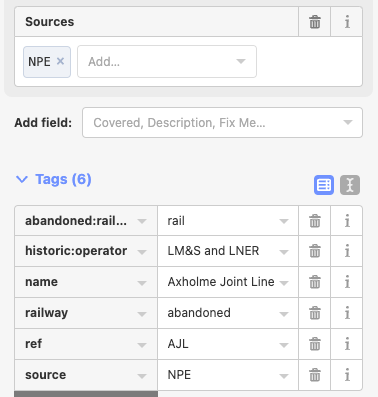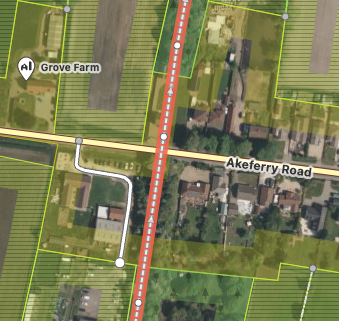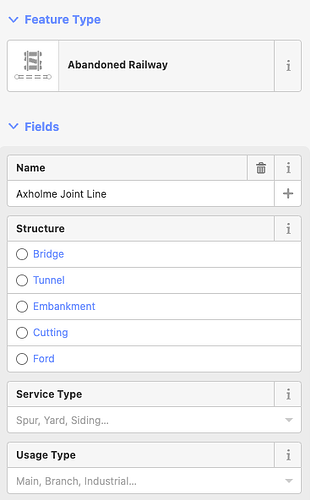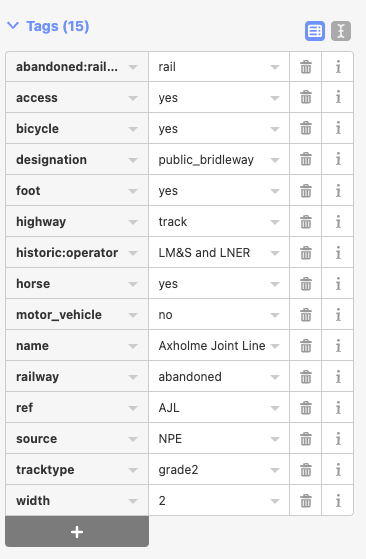Re : Changeset: 144978376 | OpenStreetMap
I use an OSM based map in my handheld GPS unit here in the UK. The map on my GPS displays not only roads and tracks but also has symbology to display what are known, here in England, as Public Rights of Way (PROW). So my (selfish) aim when editing OSM is to accurately record PROWs.
The village of Haxey has a disused railway line that runs between Haxey and Epworth five miles to the north. A section of this former railway has been designated as a PROW in the form of a bridleway. For those not familiar with the term it is a legal definition in English law that means that members of the public have a legal right to travel the bridleway on either foot, horse or cycle. It does not imply anything else.
Before my edit the bridleway was entered in OSM as feature type = abandoned railway.
Please confirm that the feature type field just applies a preset number of tags and plays no other part in the OSM database?

The original rail line ran on top of an Embankment and over two bridges that passed over other tracks. On the ground only a single bridge remains and at the site of the second the bridleway drops off the embankment to cross a track before climbing up the other side to rejoin the old route.
The OSM entry I found ignored the missing bridge and the on/off tracks descending from the embankment. Also for most of the section of interest two other ways had been added, one trying to describe the bridleway and the second a mtb route.
My solution was to delete the two unnecessary ways, break the railway at the missing bridge, add new ways to describe the on off tracks at the missing bridge and also in Haxey and attempt to ensure that the tags were consistent. This involved a lot of disconnecting, breaking and reconnecting of Ways and in the end I have failed in that the symbology of the Way changes as it crosses the bridge that I added. Unfortunately I do not know how to find connection points using the web editor to check the tagging of sections. It was and is a slow fiddly process.
My editing was complicated by trying to preserve the original historic data. I find myself asking why is it stored in OSM at all. In my view a map is for navigating and should describe what exists on the ground. As an example the screen shot below shows the same Way half a mile south of Haxey. In the past there was a rail bridge over the road but it was removed decades ago. Just north of the bridge the Way passes through a house.

I struggled with deciding on how to tag a bridleway and in the end settled on “designation=public_bridleway” along with “access=yes”.
So how should I be editing data such as the Axholme Joint Line and does it have any place in a map used for navigation?
Sorry for the long post,
S
P.S.
Here is a screen shot of the tags after my edit:


